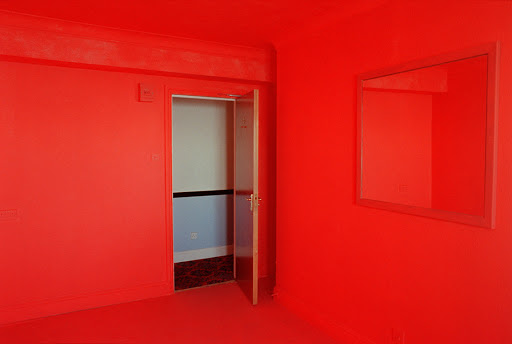https://www.fastcompany.com/3048509/how-an-analog-photo-company-can-thrive-in-an-instagram-age
How An Analogue Photo Company Can Thrive In An Instagram Age
At one point, they almost built their own mobile photography app. But instead, Matthias Fiegl and Sally Bibawy decided to stick to their company’s old-school roots. Lomography, a 23-year-old camera company headquartered in Austria, has remained loyal to the art of analog and experimental photography since the beginning, when it first discovered–and then helped popularize–the quirky Lomo LC-A film camera in a shop in Prague. After weathering the onslaught of both digital cameras and the smartphone explosion, Lomography has managed to carve out a durable–and profitable–niche doing things the old-school way: hashtag, no filter.
In an age when hinging one’s business on film and analog optics might sound like a death sentence, Lomography has not only survived, but it’s managed to establish itself as a classically artistic yet hipster-beloved brand with products sold in Urban Outfitters and other major retailers. If you think the mission of the company–encapsulated in its motto, “The future is analog”–sounds counterintuitive, the details of how Lomography evolved to this point are no less unconventional: Along the way, they’ve defied business conventions, encouraged rule breaking, and even, at one point, got a helping hand from none other than Vladimir Putin.
“In the end, you cannot do the same things with mobile phones, because they have different optics,” says Fiegl, who started the Lomographic Society with his wife, Bibawy, and longtime friend Wolfgang Stranzinger in 1992 when they were all art students in Austria. “On your phone, you can design your shot afterward. With analog, you shoot and then a few days later you see the result. It’s a different artistic process.”
“When photography was invented, people thought painting would die,” Fiegl says. “Painting had the role of documenting things. And then photography came. What happened? Painting completely changed and became much more creative. People started to change colors and paint more abstractly. That’s like what we’re doing.”
Lomography, which became one of the first photography brands to have a presence online when it launched a photo-sharing website in 1996, could have easily carried its digital-friendly strategy into the smartphone era. But instead of building an app of its own when Instagram and Hipstamatic started stealing its thunder among photo hobbyists, the company doubled down on analog.
The company’s products also have a certain appeal among photography and art students, Bibawy tells me. “The understanding and the theory of photography comes from analog,” she says. “If you start with a digital camera, you will definitely miss a big part of the theory behind it.” Just a few years after many universities shut down their film darkrooms, Lomography is seeing renewed demand for its products among educators and students alike.
https://www.lomography.com/magazine/335803-the-10-golden-rules-of-lomography-simple-use-film-camera
The 10 Golden Rules Of Lomography
1. Take your camera everywhere you go
2. Use it any time - day and night
3. Lomography is not an interference in your life, but a part of it
4. Try the shot from the hip
5. Approach your subject as close as possible
6. Don't think
7. Be Fast
8. You don't have to know before hand what you captured on film
9. Or afterwards
10. Don't worry about any rules
Notes:
- Lomography is a camera company started by Matthias Fiegl, Sally Bibawy, and Wolfgang Stranzinger in 1992. It began with the trio of art students finding the Lomo LC-A in Prague, which they then helped popularise around the world after falling in love with it's flaws.
- Characteristics of Lomography cameras include light leaks, grain, over-exposure, coloured flash, and all-round 'flaws' within film photography.
- The company produces cheap and easily accessible, easy to use cameras in order to spread awareness about how easy and fun photography can be - for example, their 'Simple Use Film Camera'. As well as this they also sell cult classics such as the camera that started the phenomenon - the Lomo LC-A, and other favourites like the Diana and Holga.
- Despite becoming increasingly popular within recent years amongst 'hipsters' and art students and even being stocked in retailers like Urban Outfitters, Lomography as a company are straying away from anything digital. Discussions about producing an app did happen, but with so many competitors such as Instagram back in the day and more recently HUJI, the company decided to focus on promoting the analogue side of things, stating that true Lomography can not be replicated on an iPhone due to the differing optics.




















